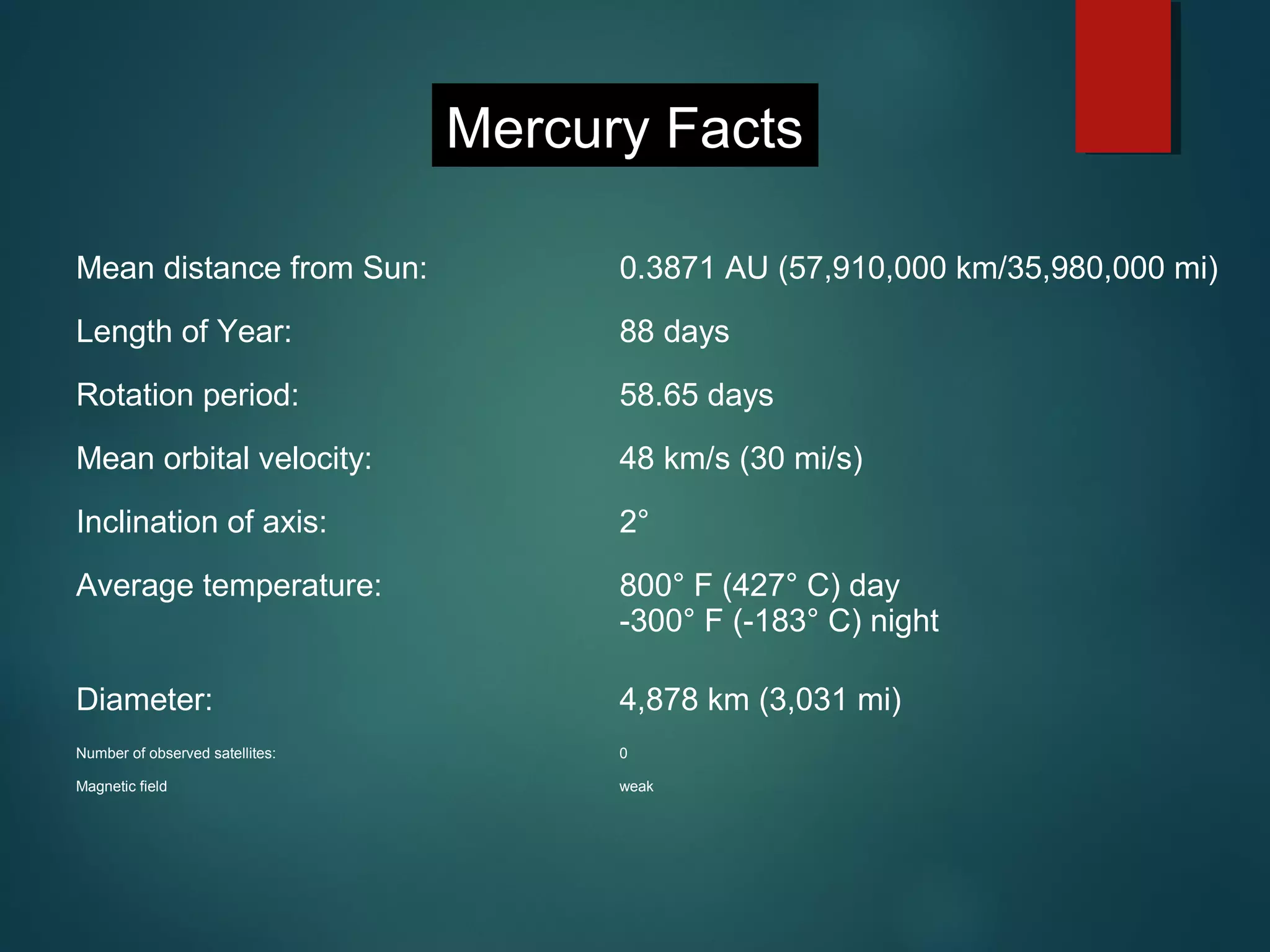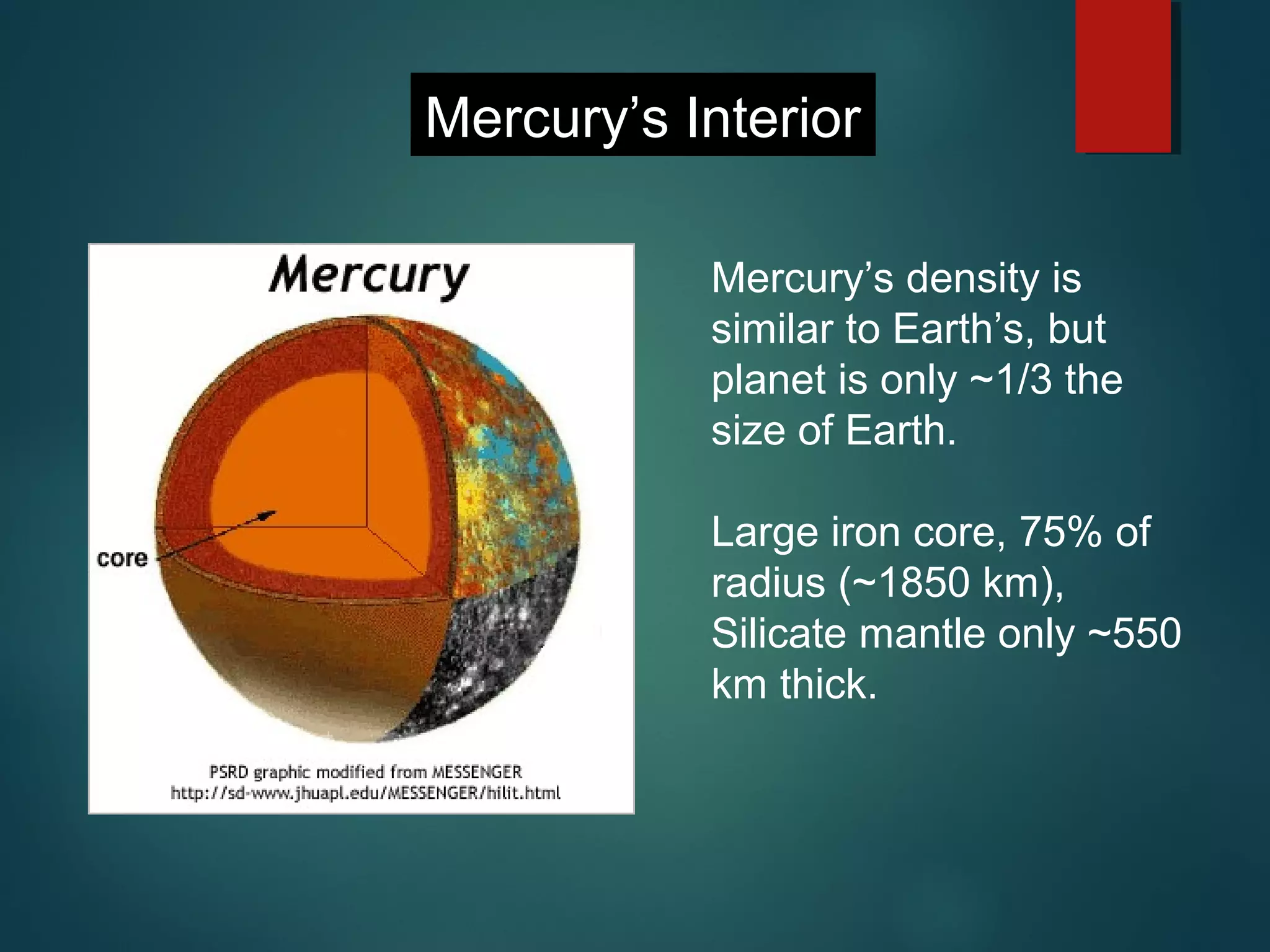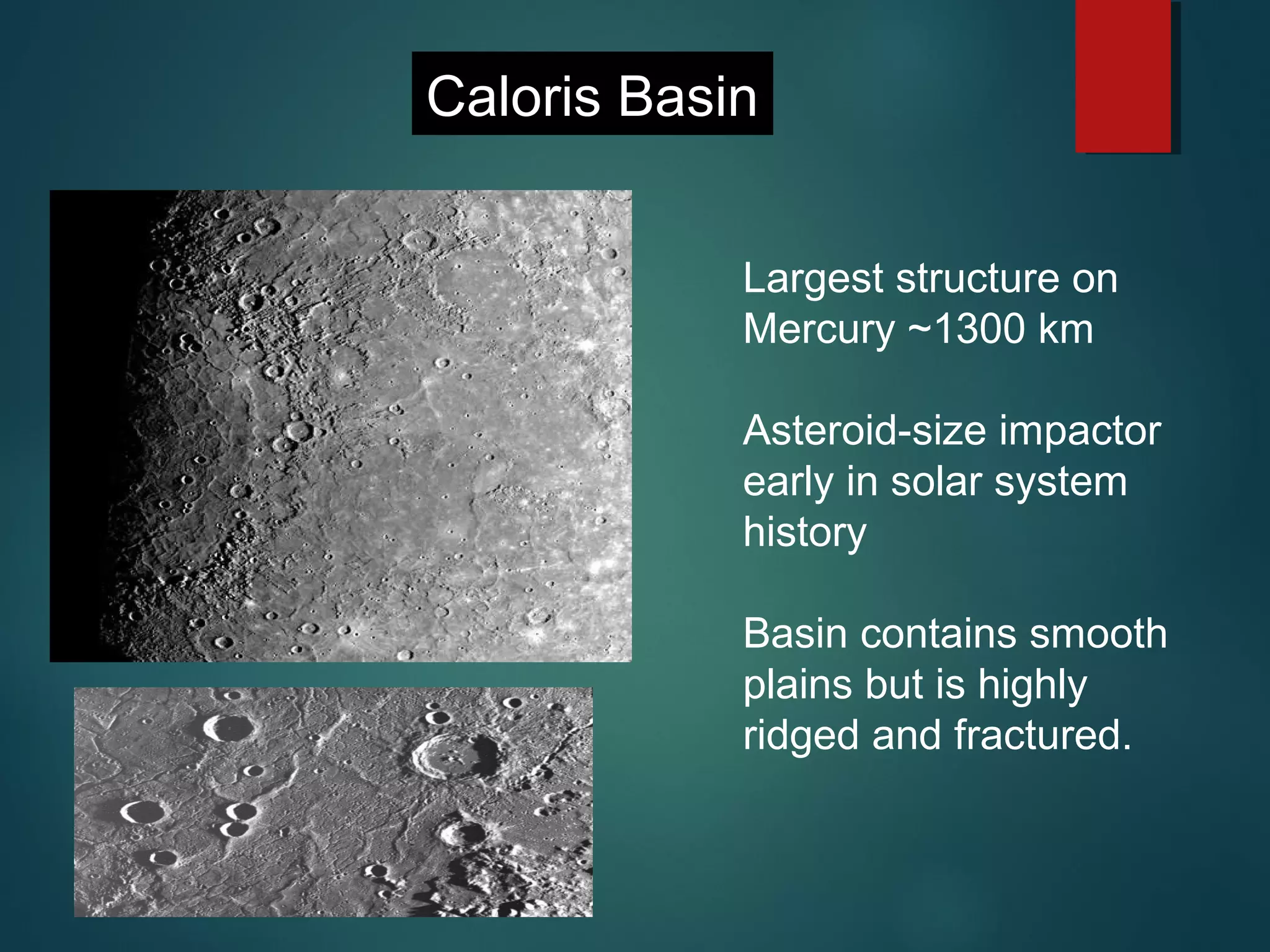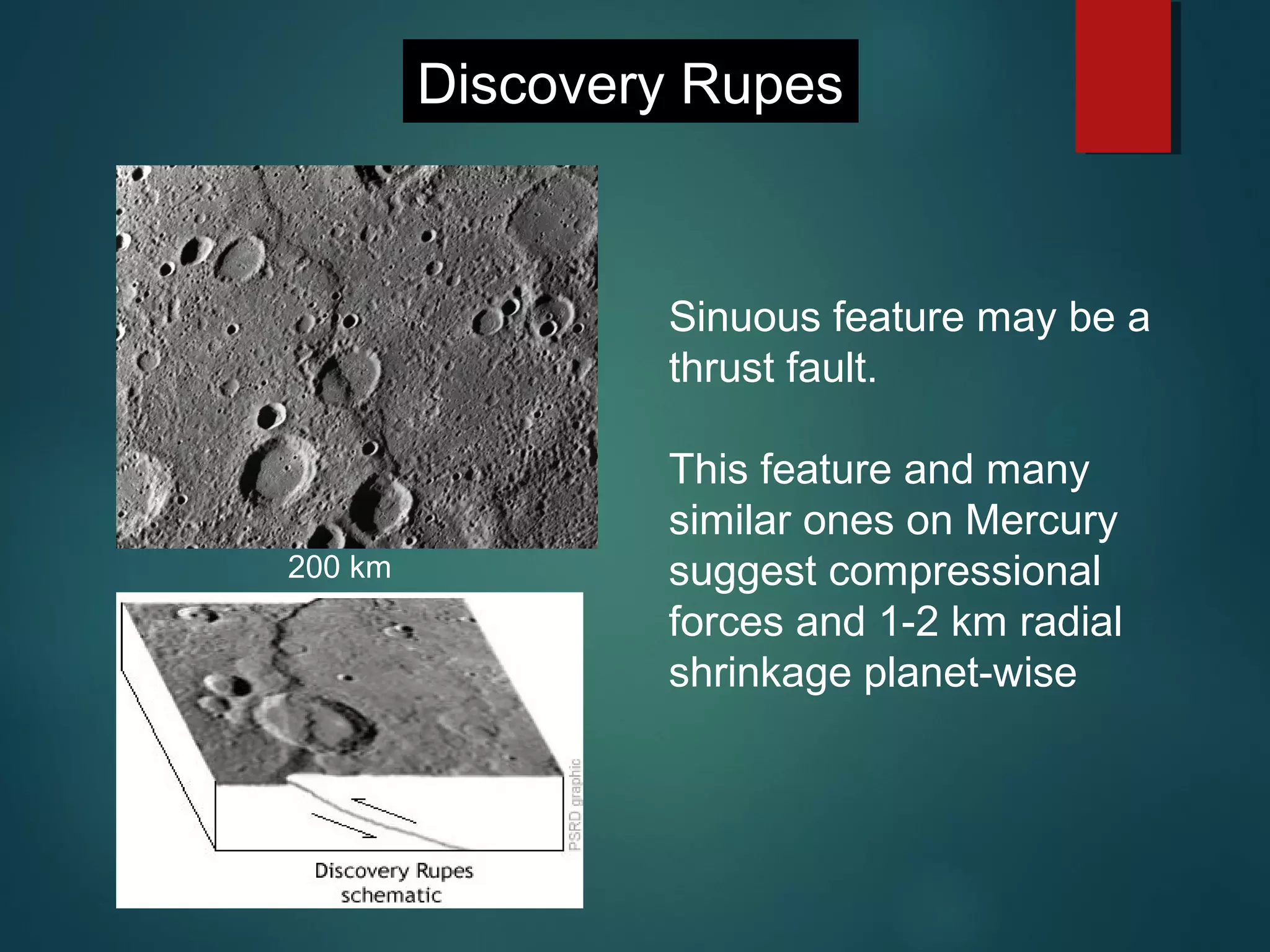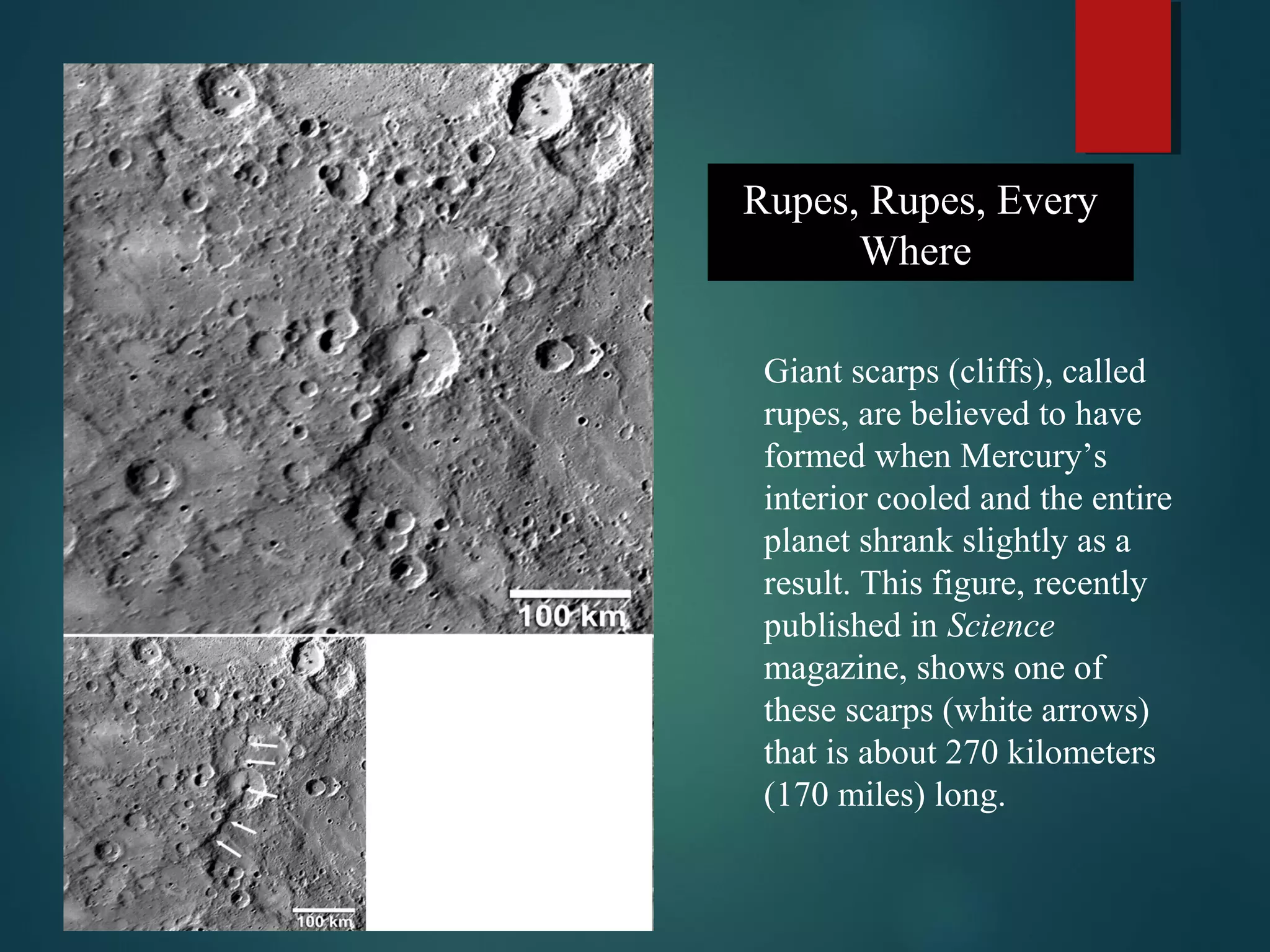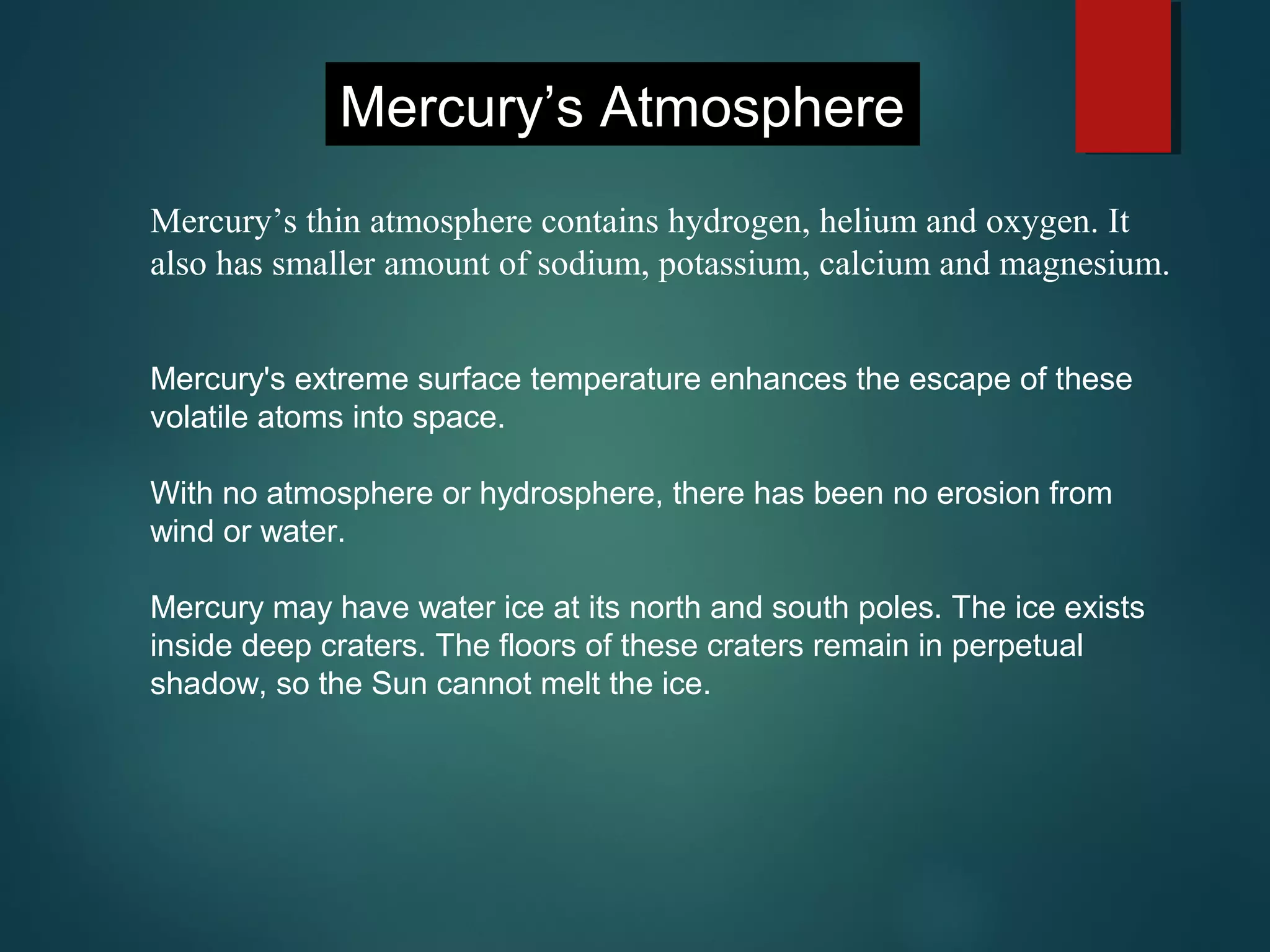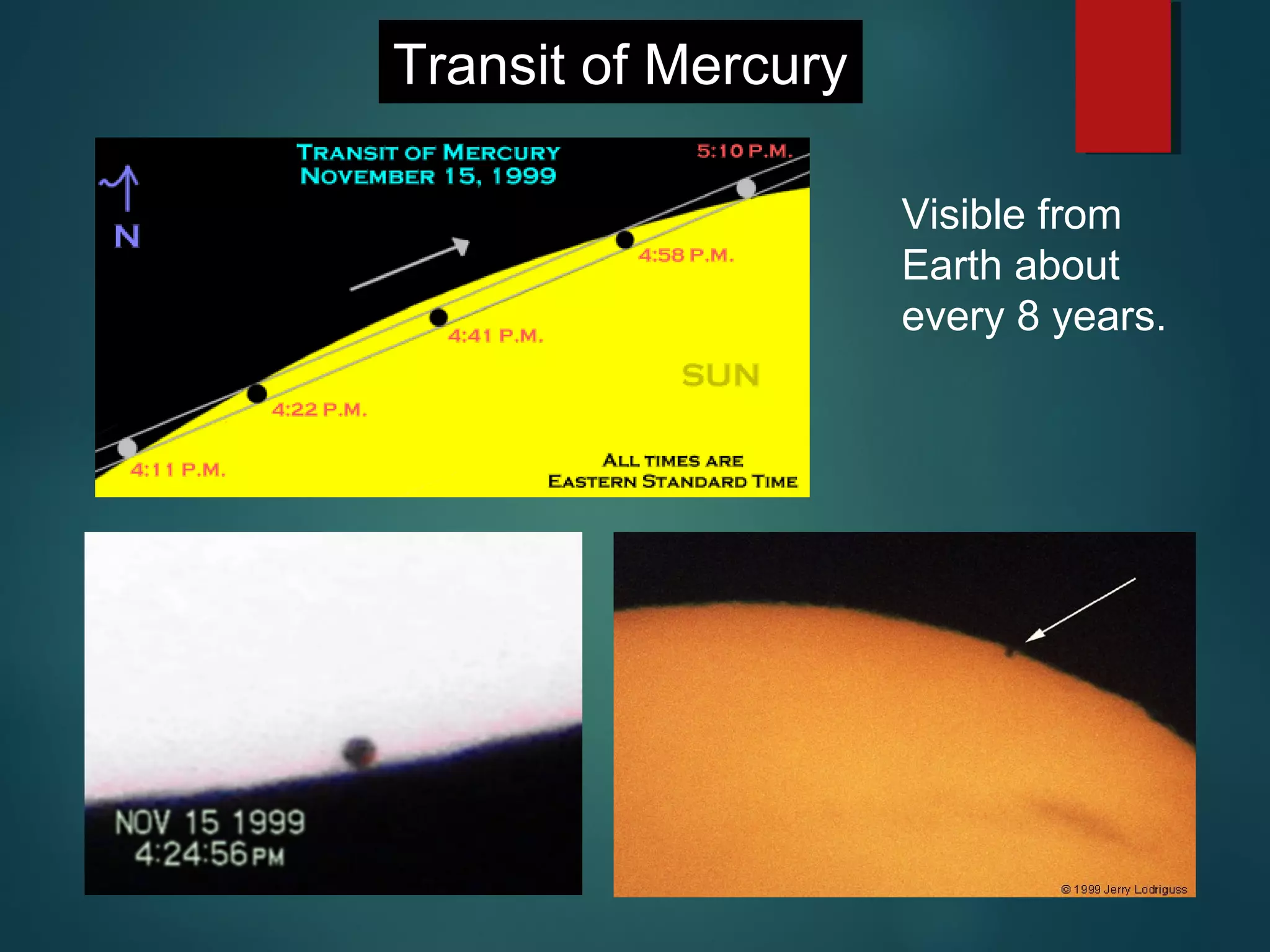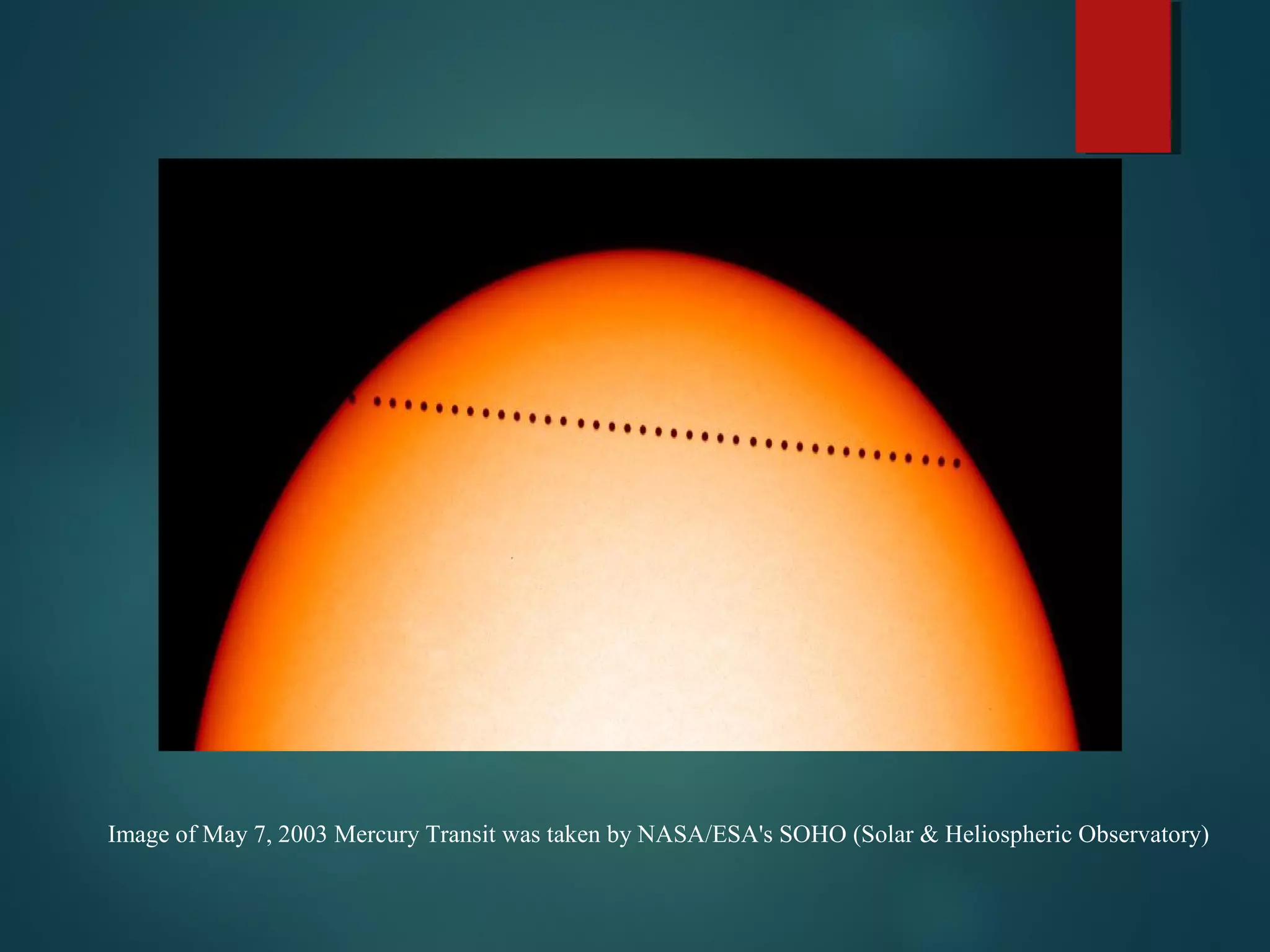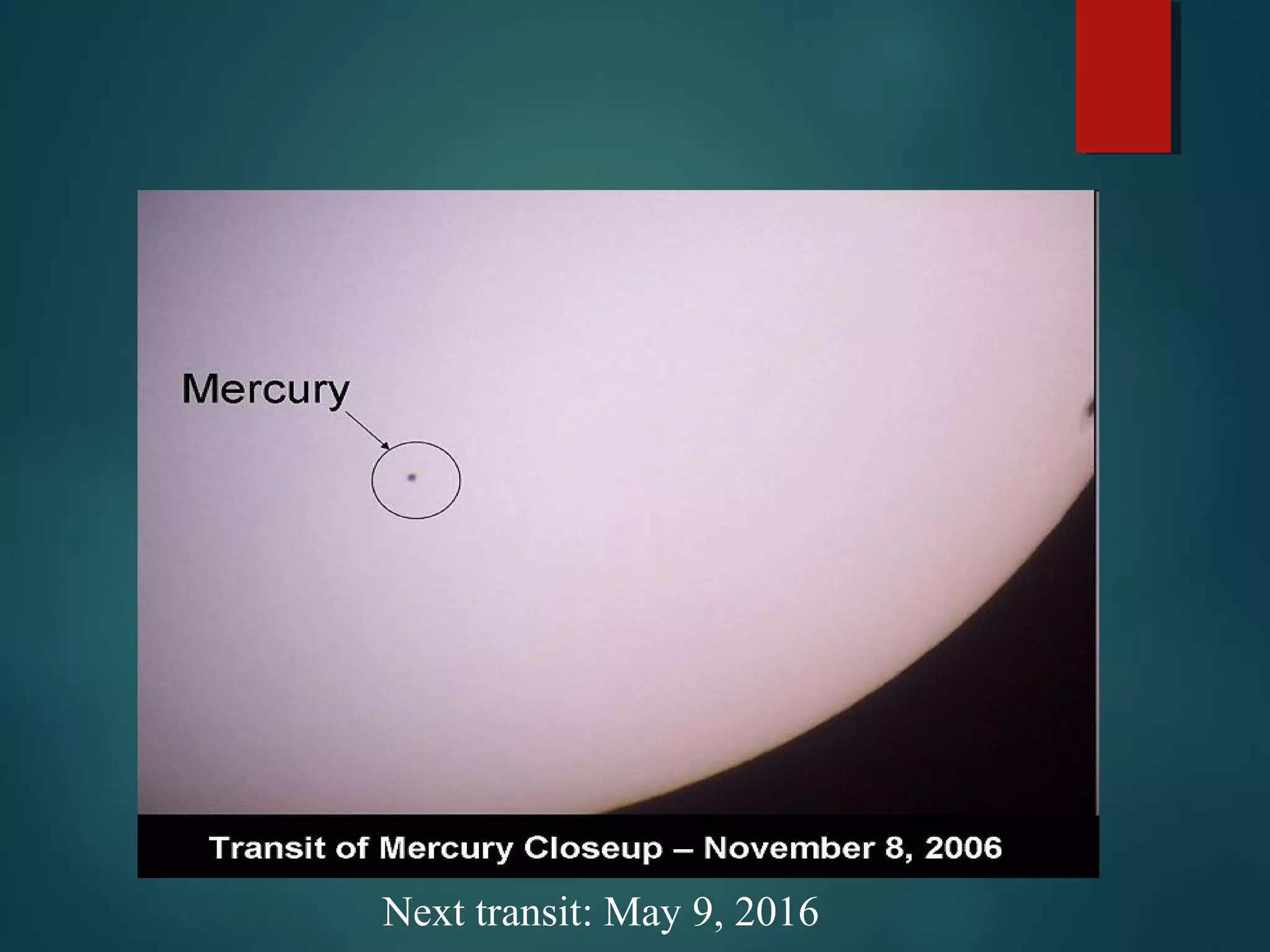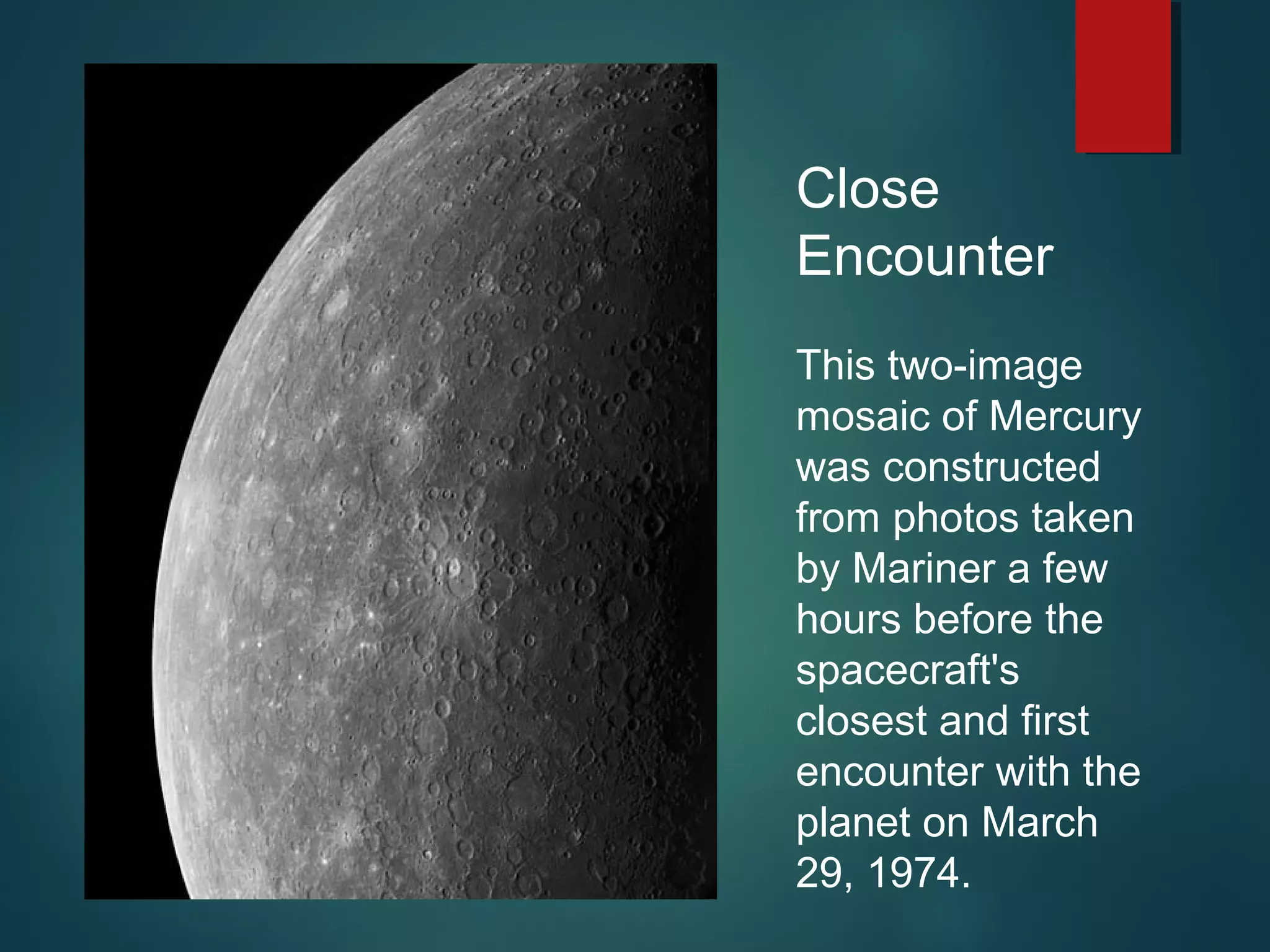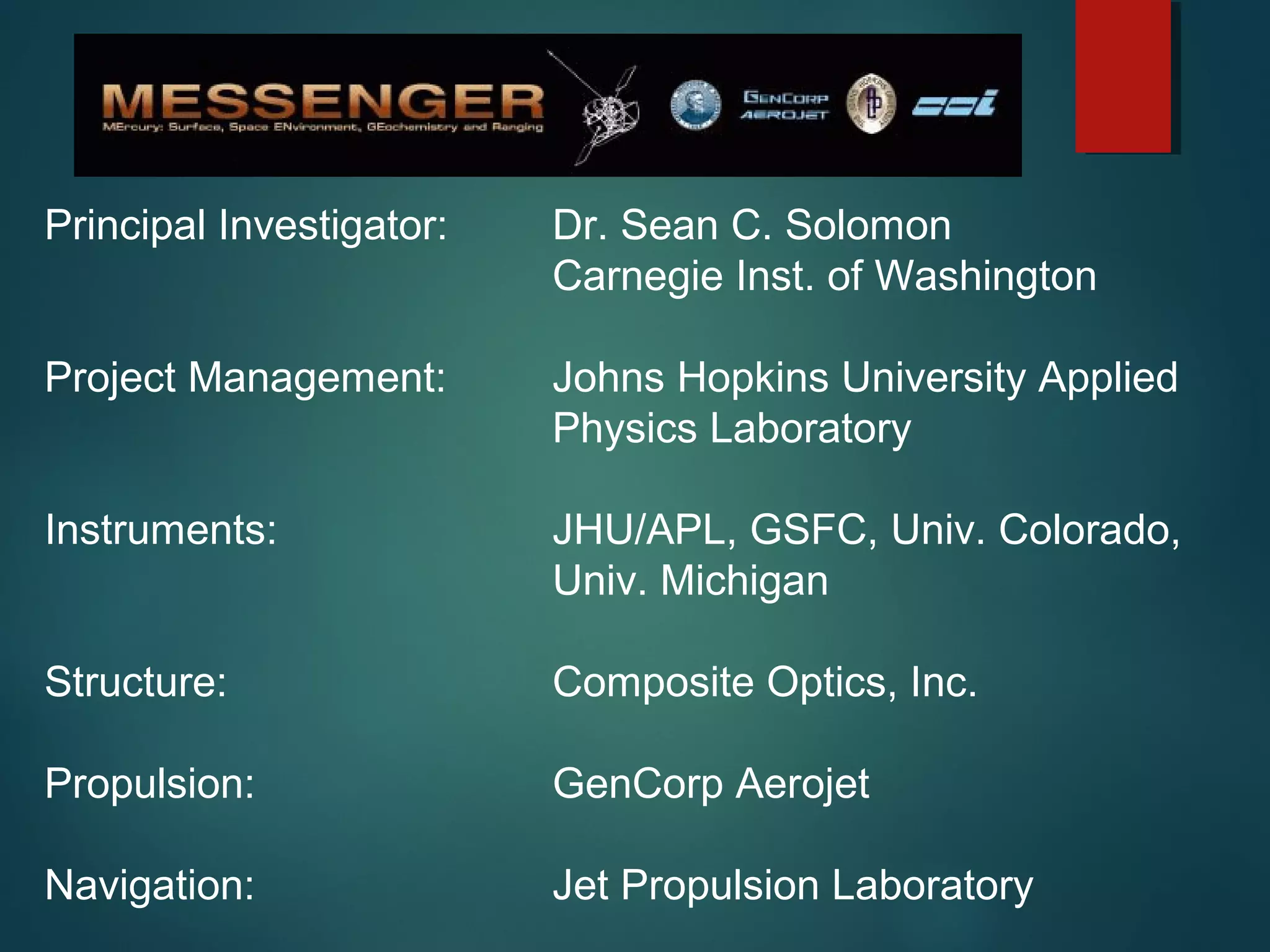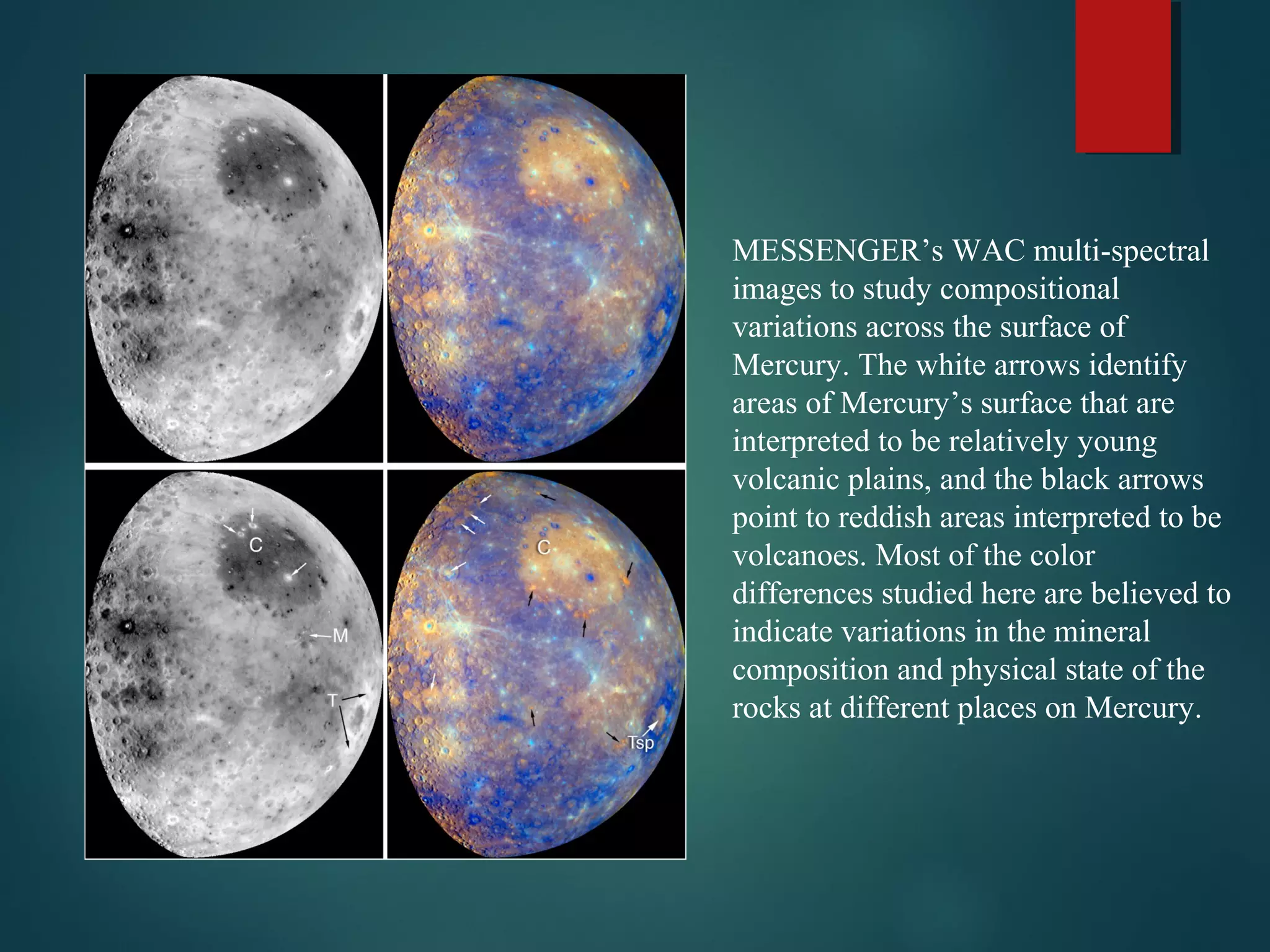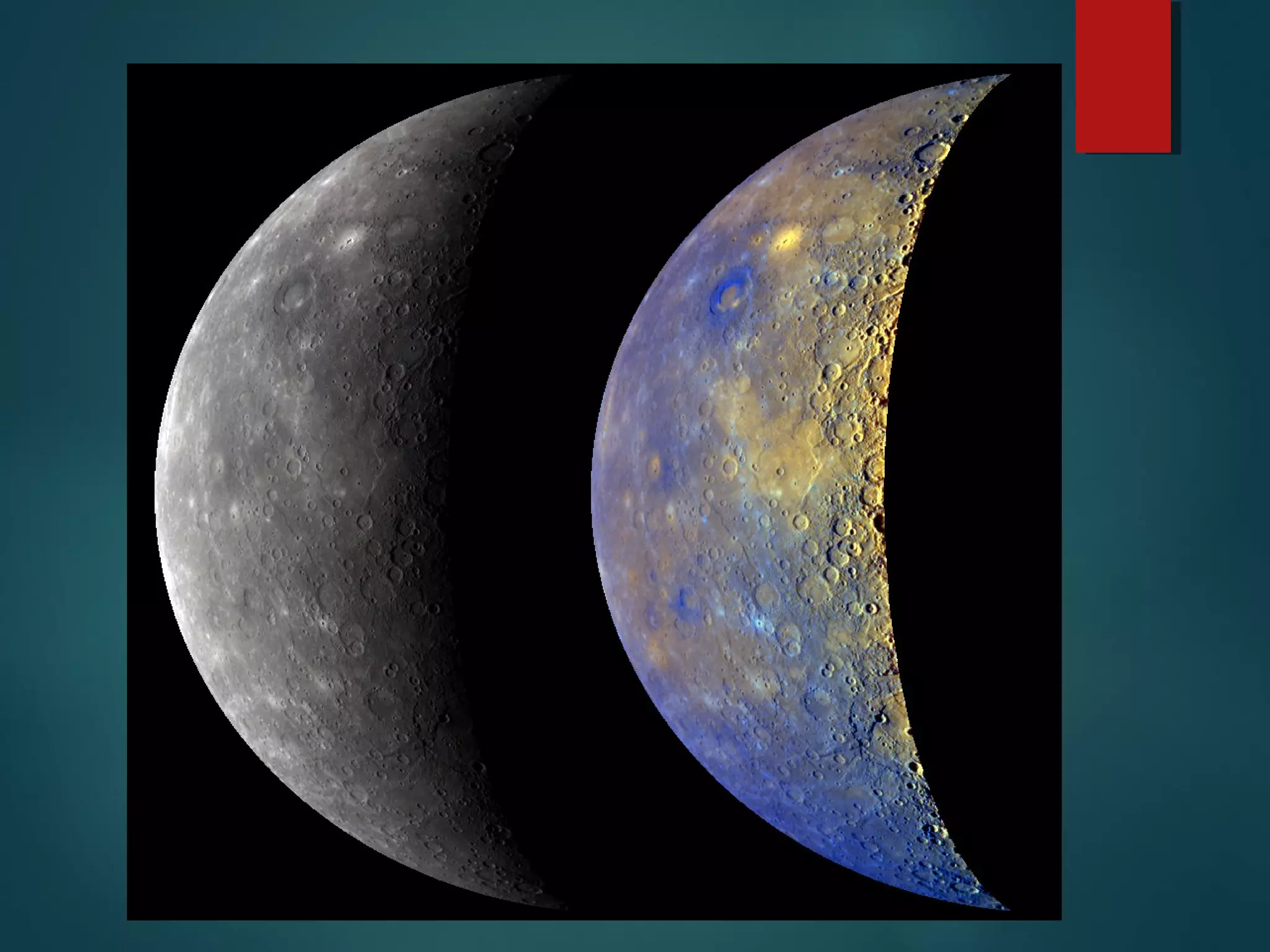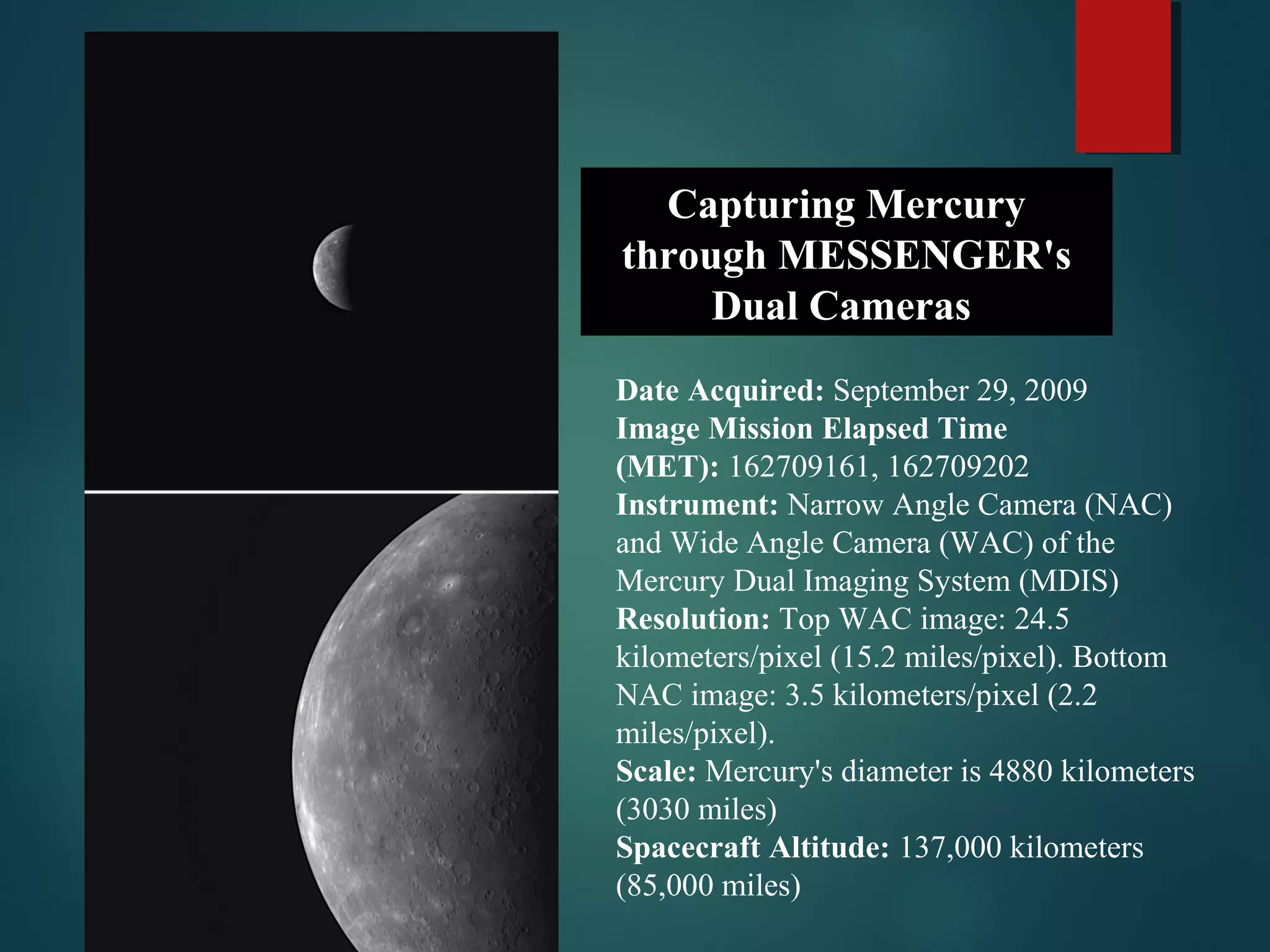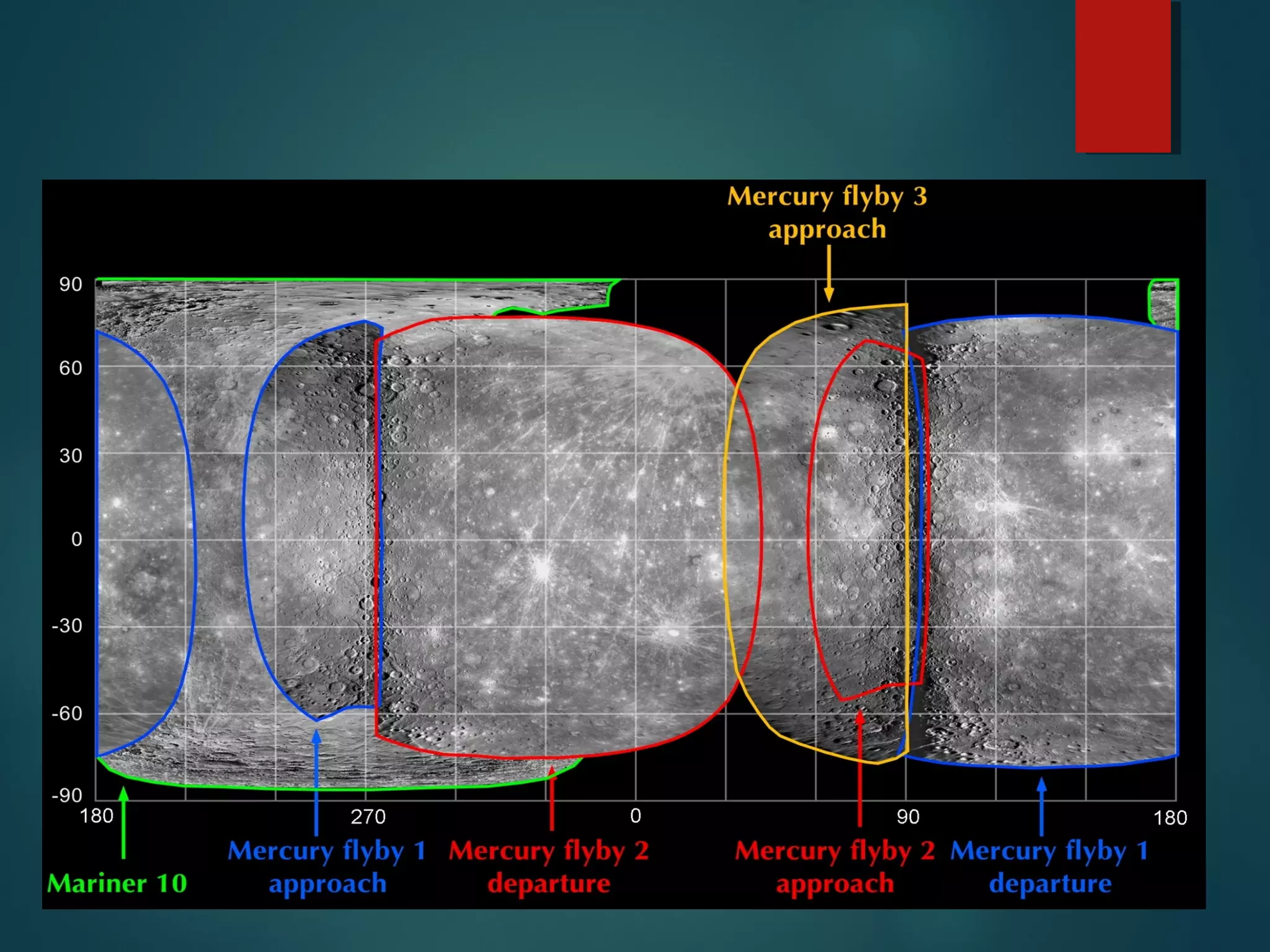Mercury is the planet closest to the Sun. It has a diameter of 4,878 km and rotates slowly, completing one rotation every 58.65 days. Mercury has a very thin atmosphere composed primarily of oxygen, sodium, potassium, and hydrogen. The MESSENGER spacecraft orbited Mercury from 2011-2015, obtaining high-resolution images and measurements of the planet's composition, geology, gravity field, magnetic field, and exosphere. MESSENGER's observations revealed that Mercury has an iron-rich core making up about 75% of the planet's radius and a complex geological history marked by volcanic activity and planetary contraction.



